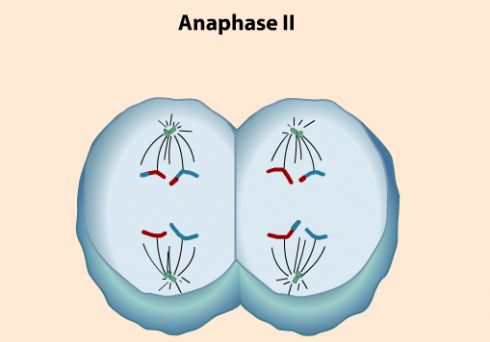
Sometimes I ask my students if we’re not just giant mechs for our microbial symbionts. After all, they outnumber us by about 10 to 1–in our own bodies. Rob Knight’s TED talk stokes my curiosity.
Middle and High School … from a Montessori Point of View

Sometimes I ask my students if we’re not just giant mechs for our microbial symbionts. After all, they outnumber us by about 10 to 1–in our own bodies. Rob Knight’s TED talk stokes my curiosity.
One of my biology groups is doing a presentation on the immune system in the next few days. They decided that they needed to wander around the school asking any teacher they could find for interesting games they could use for a presentation. Mr. Schmitt, our new math teacher, recommended the neat video above of a white blood cell hunting down a bacterium. It’s pretty dramatic.
Going over meiosis in class today I used two videos. The first one was a bit simple. The second contained perhaps too much detail, but I showed it twice and stopped it at a few points on the second showing to point out the differences between mitosis and meiosis. I particularly wanted to highlight how genes are shuffled so the resulting reproductive cells have very different DNA from their parent. The shuffling is important because we’ll be comparing the advantages and disadvantages of asexual versus sexual reproduction later this week, as well as using Punnet squares to talk about heredity.
The first video:
The second:

More information on my other mitosis resources posts (including the mitosis dance).
For ten years after discovering penicillin, Fleming and his contemporaries could not get the penicillium mold to grow fast enough for mass production. Finally, in 1942, scientists isolated a strain of the mold from a piece of moldy cantaloupe in a garbage can.

A fascinating study of 56,000 generations of bacteria, in 12 different populations, carefully documents how a new ability evolved in one of the populations — the ability to use citrate for food in addition to glucose.
About the key step in the process:
“It wasn’t a typical mutation at all, where just one base-pair, one letter, in the genome is changed,” he said. “Instead, part of the genome was copied so that two chunks of DNA were stitched together in a new way. One chunk encoded a protein to get citrate [for food] into the cell, and the other chunk caused that protein to be expressed.”
— Evolution is as complicated as 1-2-3 from Michigan State University.
That was the second step in a three step process:
The first stage was potentiation, when the E. coli accumulated at least two mutations that set the stage for later events. The second step, actualization, is when the bacteria first began eating citrate, but only just barely nibbling at it. The final stage, refinement, involved mutations that greatly improved the initially weak function. This allowed the citrate eaters to wolf down their new food source and to become dominant in the population.
I’ve been discussing different genres of scientific writing with my middle school class, so it’s interesting to point out that the article this post refers to is just a press release about the actual research paper. These are two very distinct types of scientific writing.
Although we are, by number at least, 90% bacteria, only recently have scientists with the Human Microbiome Project have just begun figuring out who those bugs are.
[The] trillions of microbes that make their homes in and on us do an excellent job keeping us healthy (crowding out harmful microbes) and sated (breaking down a lot of the food we ingest).
Now that disturbances in this rich microbiome community have been linked to weight gain, inflammatory bowel disease, vaginal infections and risk for infection with harmful microbes (such as methicillin-resistant Staphylococcus aureus, or MRSA), the importance of understanding what makes up a “healthy” microbiome has become even more apparent.
— Harmon (2012): Body Count: Taking Stock of All the Bugs That Call Humans Home in Scientific American.
A quick summary (more details here):
The equation that describes exponential growth is:
Exponential Growth: ![]()
where:
You can set the r value, but that’s a bit abstract so often these models will use the doubling time – the time it takes for the population (the number of cells, or whatever, to double). The doubling time (td) can be calculated from the equation above by:
![]()
or if you know the doubling time you can find r using:
![]()
Finally, note that the only difference between a growth model and a decay model is the sign on the exponent:
Exponential Decay: ![]()
Decay models have a half-life — the time it takes for half the population to die or change into something else.